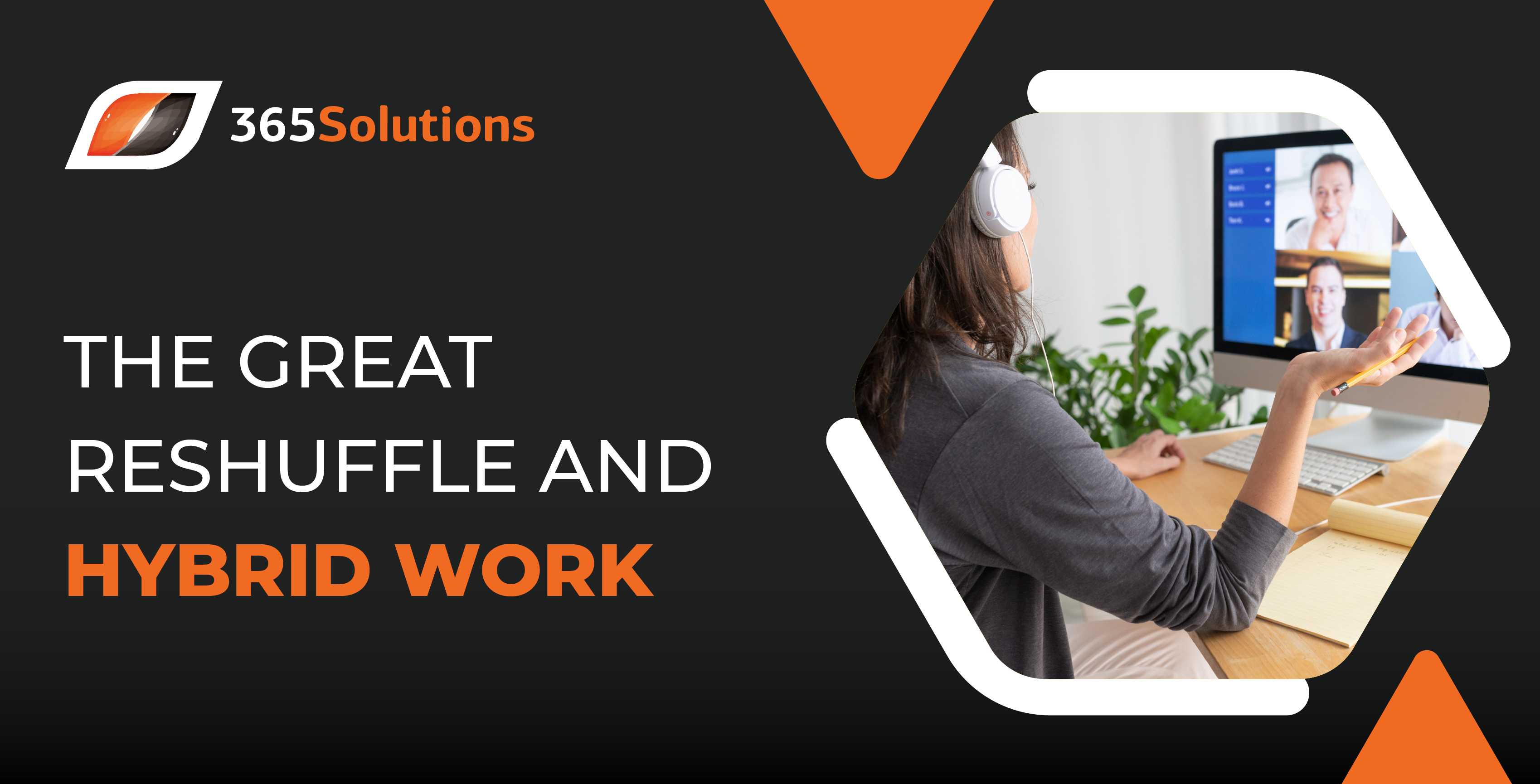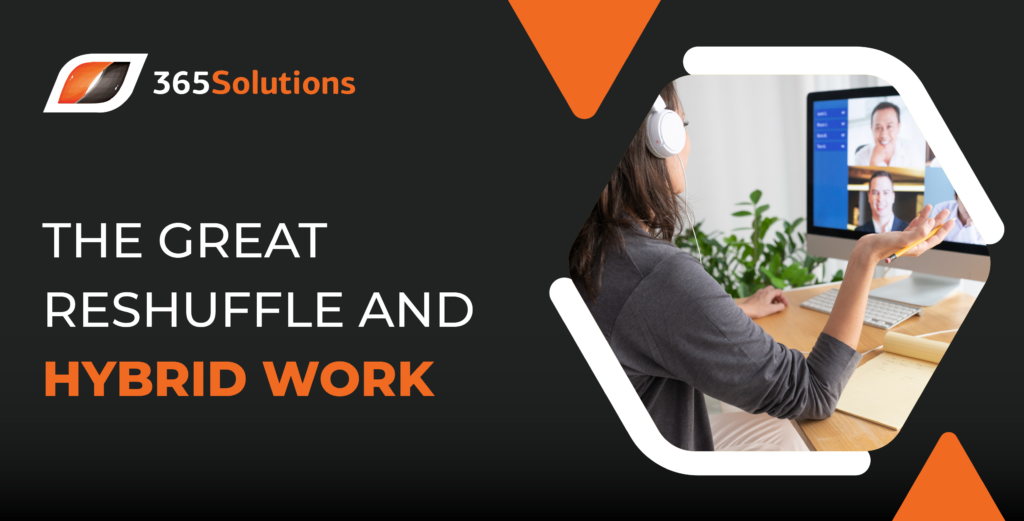Introduction
One apocalyptic experience changes our entire worldview until the next one arrives. In the last two years, the human race has witnessed the new division of human history after BC-AD — ‘Before Covid’ and ‘PostCovid’. The PostCovid world is an alternative reality that introduced us to a whole set of vocabulary hitherto unused. The’ Great Reshuffle’ is one such coinage handed down to us by the new normal. It is that moment in the history of work that has redefined hiring trends globally. Moreover, the Great Reshuffle is directly related to the hybrid work paradox, yet another postCovid phenomenon. Let’s dive deep into these two concepts and how they have reshaped the whole paradigm of employment.
The Great Reshuffle and the Hybrid Work Paradox
Earlier in September, Microsoft made an official postponement of return to the office. They said that the company was scheduled to resume office work from 4th October in an earlier announcement. But the lurking threat of the Pandemic’s delta variant made them decide against resuming office work till further notice. The company also declared that they would allow the staff a month’s time to prepare for returning to the office whenever they decide to resume.
Here’s what Jared Spataro, the corporate VP of modern work writes, “Given the uncertainty of COVID-19, we’ve decided against attempting to forecast a new date for a full reopening of our US work sites in favor of opening US work sites as soon as we’re able to do so safely based on public health guidance.” The decision looks like a causal follow-up of their latest Work Trend Index reports, indicating that hybrid/ remote/ flexible work is here to stay.
This report was also referred to in the online talk “The Future of Work” between Microsoft CEO Satya Nadella and LinkedIn CEO Ryan Roslansky. They introduced two concepts: “the Great Reshuffle” and “the hybrid work paradox” to describe the changing trends of work.
What is the Great Reshuffle
To keep it simple, the ‘Great Reshuffle’ is the shift to remorse operations for organisations. Let us try to understand this concept in the light of the Work Trens Index report. The report compiles the result of a survey conducted amongst Microsoft employees globally. Like all other companies, Microsoft, too, sent its employees home to work remotely and did remote recruitments in the last year. 1,60,000 of their employees folded to remote work in one year, and 25,000 new recruits were virtually onboarded. Surprisingly, the percentage of employees who feel included was 90%, an all-time high.
The survey also indicates employee confidence and support from the reporting managers at an all-time high. Despite all this, there remain continued challenges to employee satisfaction which may make the current trends of hybrid work unstable. And that’s where the hybrid work paradox is born.
The Hybrid Work Paradox
The Pandemic gave the whole world a push towards embracing hybrid work. Adopting this culture of flexi-working was indeed long overdue for improved productivity and efficiency. Though it’s complex, adapting to different work styles, embracing flexibility and building a culture of trust and smoothen the transition to hybrid work.
The Work Trends Index report results indicate that 73% of the Microsoft employees wanted the remote work option to continue. However, 67% also revealed that they expected more in-person engagement. The shifting employee expectations are at cross purposes with the desired flexibility of remote work, creating a catch-22 situation called the Hybrid work paradox.
Satya Nadella says, “Our new data shows there is no one-size-fits-all approach to hybrid work, as employee expectations continue to change. The only way for organisations to solve for this complexity is to embrace flexibility across their entire operating model, including the ways people work, the places they inhabit and how they approach business process.”
Is Hybrid Work the Future?
Despite the hybrid work paradox, there’s no denying that hybrid work is the future. A LinkedIn survey conducted on 500 plus C-level employees in the US and the UK shows flexibility is a priority among executives. 87% of the people admitted they would prefer working remotely for most of the time:
- 31% would prefer working fully remotely
- 56% would prefer a mix of half remote and half in-person work
- 13% want to work in-person fully
Similarly, remote job postings are on the rise on LinkedIn, growing 2.4 times from May 2020 to May 2021. These stats clearly indicate that despite the paradox, remote work is the future. The challenge now is with the companies on how to better this future.
Easy transition to remote operations, keeping track of the changing employee satisfaction expectations, and staying connected with the workforce shall do the trick. Organisations need to create a culture of trust and inclusivity to keep employees motivated. Remote working is indeed more productive as people get to work at their most productive hours. Constant micromanagement can be as much a threat as total disconnection.
Conclusion
Facilitate your remote operations with cloud services offered by 365Solutions. We are the most trusted cloud service providers in the UK and Europe. Please take a tour of our website to explore our products and services and pricing details. You can reach us at +44 20 3880 1220 or sales@365solutions.com.
References
https://rcpmag.com/articles/2021/09/09/microsoft-hybrid-work-paradox.aspx
https://www.linkedin.com/business/talent/blog/talent-strategy/hybrid-work-here-to-stay
https://www.microsoft.com/en-us/worklab/work-trend-index/hybrid-work






